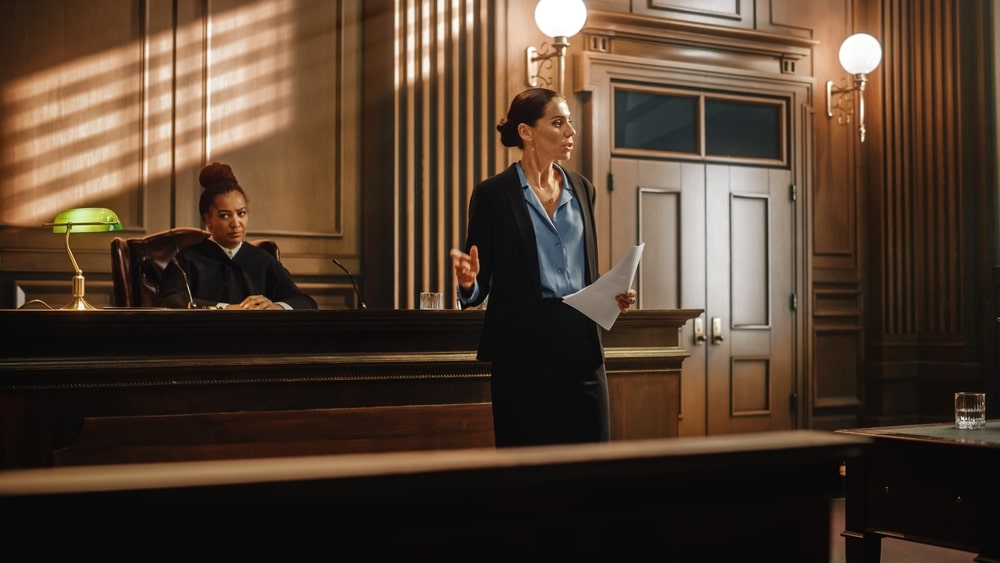The Art of an Effective Closing Argument

What makes for an effective closing argument, and how important is it? Even after days of testimony and evidence, your closing argument has the potential to sway a jury’s decision and bring about a successful outcome for your client.
It’s not a matter of simple charisma or dramatic reveals—you can refine the make-up and presentation of your final statements by utilizing key strategies that enhance their power.
Key Elements of a Persuasive Closing Argument
Crafting a persuasive, impactful final statement requires adaptability and keen attention to jury reactions during the trial. What’s more, it’s best to structure your closing with an introduction and ending that employ your trial theme and theory and leverage the following key elements.
The Power of Storytelling
The most critical component of your closing may be effective storytelling. Experts report that an audience is as much as 22 times more likely to absorb and retain information presented as a compelling story vs. facts alone, and that storytelling can trigger neurological sparks that enhance emotion and empathy.1
Retell your client’s story during your closing to ensure jurors go into deliberations with it fresh in their minds. Consider employing supporting imagery with impactful trial graphics.
Counterarguments and Reinforcement of Key Evidence
Your closing is when you fully enter into arguing the case that you have, not the case that you hoped for. Step back and evaluate what did and didn’t go to plan. Consider:
- The jury’s response to your opening statement, theory, and trial theme
- The clarity and impact of expert witness testimony, and how to boost it
- Employing clarifying, simple trial exhibits to back your reinforcement of key evidence
- What aspects of the opposition’s case engaged the jury, and how to counter them
How to Deliver a Compelling Closing Argument
Closing arguments don’t rely solely on a well-crafted case and effective evidence—your speech and persuasion skills are critical.
Using Tone, Pace, and Body Language to Persuade
At the end of a trial, it’s the jury that ultimately decides the value and veracity of facts, evidence, and theory. To that end, your persuasive skills are never more critical to the case than during the closing argument.
Once you have your draft written, focus on maximizing impact through:
- Pace – While you may know your position forward and backward, speeding through it won’t benefit the jury. Comprehension rates drop as speech speeds up, and your own perception of your rate of speaking is often inaccurate. 2Allow for pauses so the jury can effectively absorb information and emphasize your points.
- Tone – The same words can be taken entirely differently based on tone. By only changing your tone of voice, you can convey sincerity, sarcasm, derision, anger—nearly any nuance. It’s all too easy for speakers to allow their tone to shift based on impatience or irritation unrelated to the matter at hand, so pay keen attention to your underlying emotions and state of mind to avoid tipping away from your intended tone.
- Body language – Jurors aren’t just taking in your words, but all of your nonverbal cues as well. Reinforce your argument with facial expressions, hand gestures, posture, and movements that present confidence and openness.
Finally, to ensure the most effective closing argument, take time to:
- Review presentation skills and basics
- Practice with a recording that allows you to review your performance
- Include expert trial consultants among reviewers to help optimize your argument
The Importance of Clarity and Simplicity
Your closing isn’t the time to present new ideas that can diffuse your momentum or confuse the jurors, so avoid introducing new language or imagery. Instead:
- Reinforce a straightforward theory and theme
- Simplify complex evidence to support your argument
- Clarify any points of confusion around causality and narrative
Final Thoughts on Crafting an Effective Closing Argument
A closing argument is the culmination of your case, serving to remind, reinforce, and persuade jurors to your cause.
Using storytelling, structure, and simplicity can drive your argument forward, and employing effective pacing, tone of voice, and body language reinforces your message. Effective closing exhibits and practice with expert feedback can also assist you in countering the opposition’s arguments and strengthening your evidence and narrative.
Partnering with TrialQuest, part of U.S. Legal Support, also gives you a strong advantage in trial strategy and execution, including preparing a closing argument. Our seasoned professionals have supported more than 53,000 high-risk trials, arbitrations, and mediations across all practice areas and in nearly every jurisdiction.
TrialQuest also offers multimedia trial exhibits and demonstratives, jury research and consulting, mock trials, witness preparation, and trial presentation and technology services.
In addition to litigation consulting and trial services, U.S. Legal Support provides court reporting, realtime transcription, interpreting and translation services, record retrieval, analysis and organization, process serving, and more.
Connect with us today to discuss your trial strategy and other legal support needs.
Sources:
- Marketing Words. Storytelling Statistics: Why Marketing Storytelling Works So Well. https://blog.marketingwords.com/storytelling-stats/
- ResearchGate. Speech Rate and NNS Comprehension: A Preliminary Study in Time‐Benefit Analysis. https://www.researchgate.net/publication/229734412_Speech_Rate_and_NNS_Comprehension_A_Preliminary_Study_in_Time-Benefit_Analysis

Editoral Policy
Content published on the U.S. Legal Support blog is reviewed by professionals in the legal and litigation support services field to help ensure accurate information. The information provided in this blog is for informational purposes only and should not be construed as legal advice for attorneys or clients.


